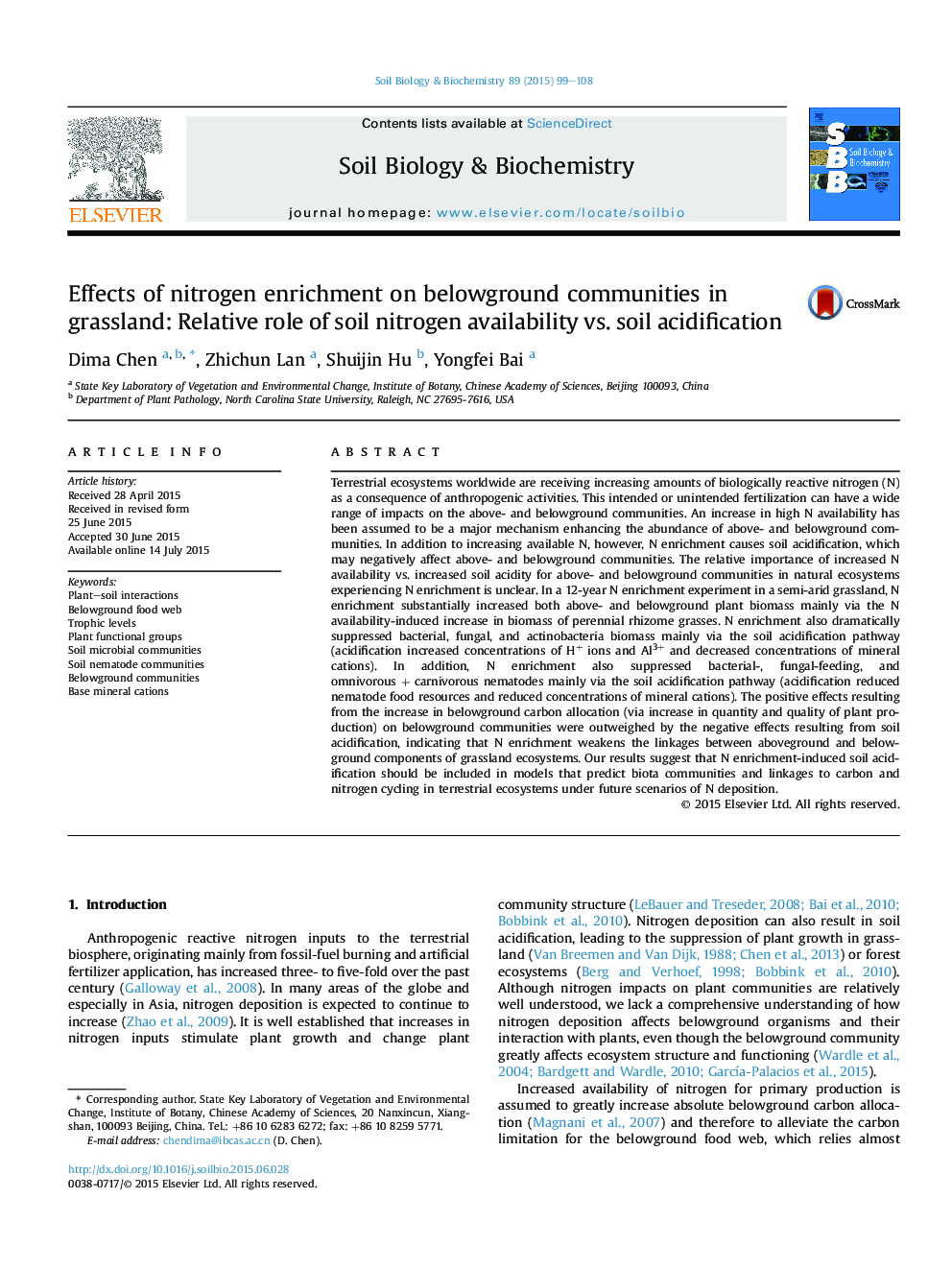| کد مقاله | کد نشریه | سال انتشار | مقاله انگلیسی | نسخه تمام متن |
|---|---|---|---|---|
| 2024458 | 1542595 | 2015 | 10 صفحه PDF | دانلود رایگان |
• N enrichment increased both above- and belowground plant biomass mainly via N availability.
• N enrichment had negative effects on both microbial and nematode communities in semi-arid grassland.
• The positive effects of belowground C allocation on belowground communities were outweighed by soil acidification.
• N enrichment weakens the linkages between aboveground and belowground components of grassland ecosystems.
Terrestrial ecosystems worldwide are receiving increasing amounts of biologically reactive nitrogen (N) as a consequence of anthropogenic activities. This intended or unintended fertilization can have a wide range of impacts on the above- and belowground communities. An increase in high N availability has been assumed to be a major mechanism enhancing the abundance of above- and belowground communities. In addition to increasing available N, however, N enrichment causes soil acidification, which may negatively affect above- and belowground communities. The relative importance of increased N availability vs. increased soil acidity for above- and belowground communities in natural ecosystems experiencing N enrichment is unclear. In a 12-year N enrichment experiment in a semi-arid grassland, N enrichment substantially increased both above- and belowground plant biomass mainly via the N availability-induced increase in biomass of perennial rhizome grasses. N enrichment also dramatically suppressed bacterial, fungal, and actinobacteria biomass mainly via the soil acidification pathway (acidification increased concentrations of H+ ions and Al3+ and decreased concentrations of mineral cations). In addition, N enrichment also suppressed bacterial-, fungal-feeding, and omnivorous + carnivorous nematodes mainly via the soil acidification pathway (acidification reduced nematode food resources and reduced concentrations of mineral cations). The positive effects resulting from the increase in belowground carbon allocation (via increase in quantity and quality of plant production) on belowground communities were outweighed by the negative effects resulting from soil acidification, indicating that N enrichment weakens the linkages between aboveground and belowground components of grassland ecosystems. Our results suggest that N enrichment-induced soil acidification should be included in models that predict biota communities and linkages to carbon and nitrogen cycling in terrestrial ecosystems under future scenarios of N deposition.
Journal: Soil Biology and Biochemistry - Volume 89, October 2015, Pages 99–108
